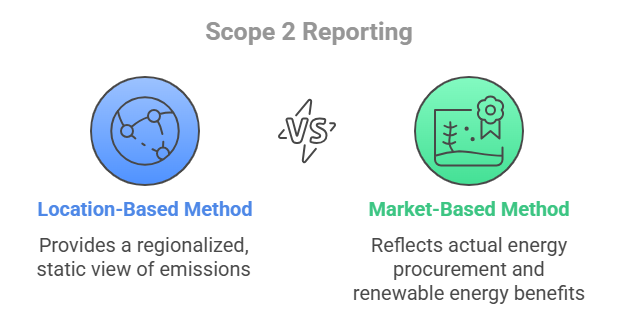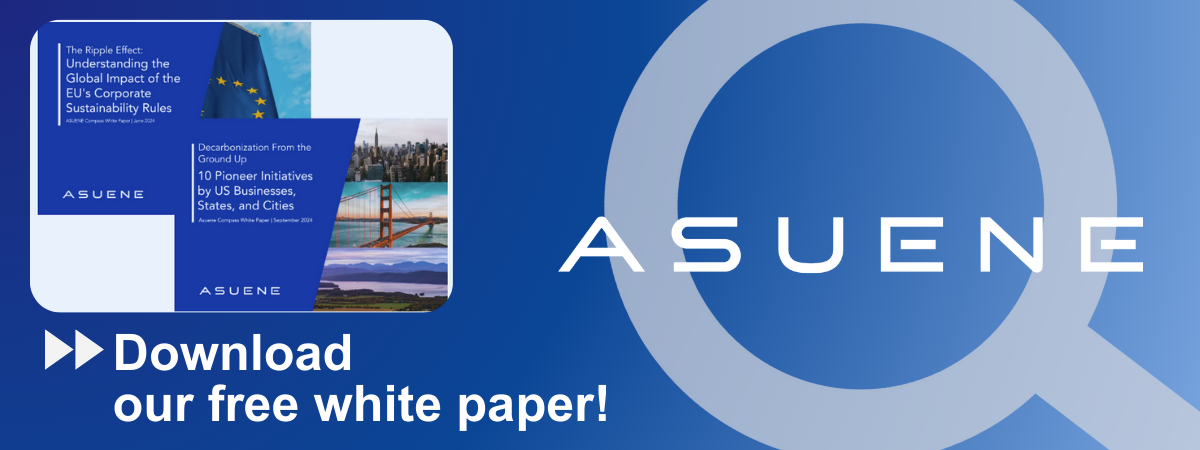- Article Summary
-
Overview
RE100, a global initiative bringing together influential businesses committed to 100% renewable electricity, is increasingly redefining how corporations approach Scope 2 emissions; those associated with purchased electricity, heat, and steam. With growing scrutiny on environmental disclosures and the rise of ESG-driven investing, companies in the U.S. and Europe are under intensifying pressure to align with RE100’s expectations. This alignment is transforming Scope 2 strategies, shifting them from basic compliance exercises to proactive decarbonization roadmaps.
What is RE100?
RE100 is a global corporate initiative led by the Climate Group in partnership with CDP (formerly the Carbon Disclosure Project). Launched in 2014, the initiative unites hundreds of influential businesses that have committed to sourcing 100% of their electricity from renewable sources. Membership is conditional upon setting a public target year by which the company will achieve 100% renewable electricity use (usually by 2030 or sooner) and reporting annually on progress.
The initiative provides a framework for action, including guidance on procurement strategies, disclosure requirements, and verification processes. Companies that join RE100 benefit from shared knowledge, visibility in climate leadership circles, and alignment with emerging stakeholder expectations. As of 2025, the RE100 Technical Criteria include stricter requirements around credible procurement, emphasizing market-based instruments that deliver additionality and exclude lower-impact options like unbundled RECs in certain regions.
RE100’s influence is global, but its impact is particularly significant in markets like the U.S. and Europe where regulatory pressures and grid complexities demand sophisticated energy sourcing strategies.

Regulatory Landscape and Evolving Standards
The post-2025 regulatory environment marks a pivotal shift in emissions reporting. In Europe, the Corporate Sustainability Reporting Directive (CSRD) mandates more granular energy usage and emissions disclosures, including both location-based and market-based Scope 2 data. Similarly, in the U.S., the Securities and Exchange Commission’s (SEC) climate-related disclosure rules are expected to increase transparency around indirect emissions. RE100’s criteria, which require credible procurement of renewable electricity, serve as both a benchmark and a pressure point for companies navigating these tightening frameworks.
Recent regulatory updates emphasize the need for harmonized methodologies. The Greenhouse Gas Protocol’s anticipated updates in 2025 are expected to clarify dual reporting and address inconsistencies in market instruments like Energy Attribute Certificates (EACs) and Power Purchase Agreements (PPAs). These developments are reinforcing the strategic relevance of RE100 as companies recalibrate Scope 2 strategies to remain compliant and competitive.
Market-Based vs. Location-Based Accounting: RE100’s Influence on Scope 2 Reporting
Leading RE100 members are advancing from certificate-based strategies to more robust and forward-thinking renewable electricity procurement models. This shift reflects a broader transition in how companies view Scope 2 emissions, not as mere compliance data, but as a critical component of climate action and business transformation.
Central to this transformation is the distinction between two accounting methods:
- Location-Based Method: Calculates emissions based on the average emissions intensity of the local electricity grid, offering a regionalized and static snapshot of impact regardless of a company’s actual energy procurement choices.
- Market-Based Method: Captures emissions based on the specific contracts and instruments a company uses to procure electricity (such as RECs, EACs, or PPAs) enabling firms to reflect the carbon benefits of their renewable energy purchases.

RE100 explicitly favors the market-based approach because it better reflects corporate intent and impact. Under RE100’s updated technical standards, companies are incentivized to use mechanisms that create measurable change in renewable energy supply, particularly those that demonstrate additionality. The growing emphasis on market-based procurement fueled by RE100’s leadership illustrates a paradigm shift: energy sourcing is becoming a strategic climate tool, not a passive reporting obligation.
Case Studies: U.S. and European Leaders
Google (U.S.): Google has taken a pioneering approach to Scope 2 decarbonization by committing to source carbon-free energy (CFE) on a 24/7 basis at every data center and campus around the globe. Rather than relying solely on annual renewable energy matching through RECs, Google uses advanced AI to match local renewable electricity supply with hourly demand. This includes investment in time-coincident renewable projects, grid analytics tools, and partnerships with utilities to design new procurement frameworks. Google’s strategy not only aligns with RE100 goals but also sets a new standard for high-resolution energy accountability.
IKEA (EU): IKEA has pursued an aggressive renewable energy procurement strategy to meet its RE100 commitment. The company owns and operates over 900,000 solar panels and more than 500 wind turbines globally, with a significant concentration in Europe. In addition to direct investments, IKEA uses PPAs and on-site installations to source renewable energy for its stores, factories, and warehouses. Through Ingka Group, IKEA has also developed innovative financing tools to support suppliers in transitioning to renewables—further extending its Scope 2 influence along the value chain. IKEA’s approach demonstrates the intersection of RE100 ambition with CSRD regulatory preparedness and value chain engagement.
These companies exemplify how RE100 participation goes hand in hand with innovation in Scope 2 management. Their strategies offer replicable models for other corporations aiming to meet both voluntary and regulatory demands. Their strategies offer replicable models for other corporations aiming to meet both voluntary and regulatory demands.
Conclusion
RE100 is far more than a pledge; it’s a powerful catalyst accelerating the evolution of corporate Scope 2 emissions strategies. In the face of evolving regulations, investor expectations, and climate imperatives, companies aligning with RE100 are setting new benchmarks for energy procurement, transparency, and accountability. As 2025 approaches, the convergence of RE100 principles with legal mandates will likely turn Scope 2 decarbonization from a best practice into a baseline requirement. For forward-thinking businesses in the U.S. and Europe, embracing this transformation is not just an ESG choice, it’s a strategic imperative.
Why Work with ASUENE Inc.?
Asuene is a key player in carbon accounting, offering a comprehensive platform that measures, reduces, and reports emissions, including Scope 1-3, with expertise in decarbonization. Asuene serves over 10,000 clients worldwide, providing an all-in-one solution that integrates GHG accounting, ESG supply chain management, a Carbon Credit exchange platform, and third-party verification.
ASUENE supports companies in achieving net-zero goals through advanced technology, consulting services, and an extensive network.


